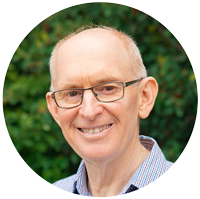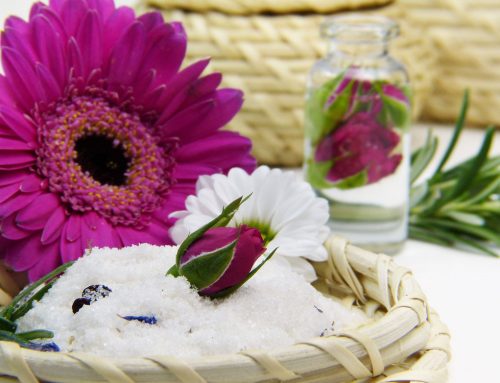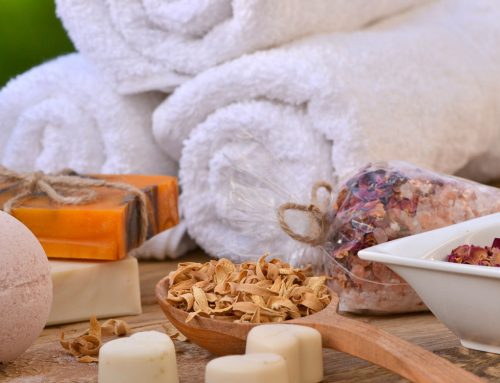Why Thermotherapy Works, Part 2
The Physiology is Complex, the Thermotherapy is Simple.
In this post, we will see that combining feedback from your body (your symptoms and comfort level) with suggestions from thermotherapy’s history, simplifies the process of finding “just the right dose” of thermotherapy for your condition.
Your body is smart
My definition of a symptom: something that indicates your body has a problem that it needs your conscious help to deal with.
The complex processes behind thermotherapy that I briefly sketched in Part 1, along with millions of other processes, are happening in your body right now. If you are fit and healthy, your body does everything you want of it without you noticing. You only become aware of it when something goes wrong.
This is amazing when you think about it. Even the body of a person in intensive care, on life-support, is still carrying out the overwhelming majority of its processes. Even if you have a chronic illness or disability, most of your body’s processes have been humming along without complaint since before you were born. Over those years most of your 30 trillion cells have been regularly replaced. Despite that, our organs, and systems, have coped well with the insults from the environment and our own habits.
There is only one conclusion: your body is really smart. In a supportive environment, it will self-regulate all its processes to heal and return us to good health and fewer symptoms.
A supportive environment includes a lot more than thermotherapy. If you have a chronic disease your environment should include appropriate food, water, activity and stress-relief. These are things for you to prepare for during your thermotherapy series.
Homeostasis is Personal
Remember the definition of homeostasis included the words, “many variables… being kept within certain pre-set limits.” What makes this interesting is that these set points are changeable, sometimes permanently (e.g. acclimatisation) but often temporarily (in illness especially fevers) or cyclically (circadian or diurnal rhythm, menstrual cycle).1 Then there are other changes that we don’t understand. Recently it has been pointed out that average human body temperature has declined by about 0.4°C in industrialised countries over the last 150 years.2 This means that temperatures of hydrotherapy treatments in the textbooks may need to be adjusted for the people alive today.
My impression, from personal experience, is that each thermotherapy treatment session has to be adjusted because there is a variation:
- From person to person. Maybe not much, but enough to make a quite an impact on thermotherapy. It can be as stark as, “Some like it hot, some like cold.”
- Throughout the day. Some treatments are best in the morning, others in the evening.
- According to your condition. Patients who are unfit, tired, or overweight or those with chronic conditions may not tolerate some treatments.
- Depending on whether you are sick or well. This is very interesting. People who have a fever will look forward to a hot bath or sauna that they normally dislike. And if you have an infection, your immune system reacts to the treatment with a lot more vigour than it does when you are well.
- According to whether you have saunas or hot baths (or ice baths) frequently. And it varies according to whether it’s the first or second treatment in a series.
Your body will have coped with these points before, so we can assume it is smart enough to cope with treatment and give us good feedback. So this list alerts us that thermotherapy must:
1. Treat the patient
Professor George Knapp Abbott, one of my favourite hydrotherapists, sums up his textbook, “Principles and Practice of Hydrotherapy for students and practitioners of medicine” by stating:
Each case should be studied with a view to individualizing the treatment so as to treat the patient, not merely their disease.3
Dr Abbott gives some principles for individualising treatments:
- Treatments that are disagreeable to patients are rarely effective
- Do not change the treatment too quickly, certainly not daily, only change the treatment as the patient’s condition changes or goals are reached.
- Proper combinations (of heat and cold) require personal supervision and knowledge of physiology (normal and abnormal), and how to achieve the desired therapeutic effect.
In practice, this means the thermotherapist simply listens carefully to your story, notes your likes and dislikes, offers you a treatment that we think may help your condition, modifying it as you respond to our suggestions, and according to your body’s response to the treatment.
A second principle from Dr Abbott is based on the underlying belief that your body is very smart, so thermotherapy must:
2. Support the patient’s body
In his textbook for nurses, Dr Abbott says:
Treatment… should assist, encourage, and co-operate in and with the natural mechanisms of the body which maintain health and prevent or counteract disease processes.4
In other words, thermotherapy is very respectful of your body’s ability to control its own homeostasis, circulation, and genetics, and its many systems, organs, glands and cells. Our job as thermotherapists is to provide the environment where your body can heal most effectively.
Once again Dr Abbott gives some principles to achieve this:
- Treatments should only take 45-50 minutes. That is: 15-20 minutes of treatment with a 30 minutes rest afterwards. Longer treatments may be good for relaxation, but for treating disease we aim at the shortest possible time. This way you don’t get fatigued and can spend all your energy on healing.
- Apply as many procedures as possible, simultaneously. To achieve the whole treatment in 50 minutes.
- Milder procedures are given first. Procedures that produce a greater reaction, so need more energy from the body, last.
- Only one tonic cold is given during a single treatment session. Also to reduce the amount of energy the body expends.
- Sweating treatments must be followed by a cooling application. This assists the body to return to homeostasis more easily.
And finally, there is one overarching principle that ensures the treatment is successful:
- The patient should be comfortable at all times.
3. Keep the patient comfortable
Saunas and hot baths are used recreationally because they make us feel good. We feel comfortable afterwards. I’ve read dozens of sauna studies over the last few months and even though they don’t always help heal the disease, I can’t remember a single study where people were more uncomfortable afterwards. Wherever it was measured, quality of life (a formal measure of comfort) improved. Comfort is an individualised, accurate and immediate indicator that your smart body is in a healing environment.
Comfort is also a lack of symptoms. Reduced symptoms indicate that healing is taking place and there is less the body needs to warn us about.
At the end of a successful thermotherapy treatment session, you will be comfortably warm and dry. And essentially, you should have some relief of symptoms. The outcomes of thermotherapy are usually immediately obvious.
You can read all these principles on the About page at Traditional Hydrotherapy.
Finding the Right Dose
Finding the right dose is as simple as treating you as an individual, and ensuring you are comfortable and relaxed throughout the treatment. We leave the body to manage the complex systems while we give it the heat or cold it needs to assist it to heal. When you are comfortable and your symptoms are reduced, it means that your body is getting what it needs.
So we have solved the problem of finding the right dose, there is only the problem of deciding on what treatment to use. Dr Abbott and his colleagues help us out here too because:
Thermotherapy has History
With over 2,000 years of use, only effective thermotherapy treatments have survived to go into the textbooks. Early last century, when thermotherapy was the front line treatment, medical textbooks contained procedures for many different diseases. To treat a disease we can look up treatments they used. Of course, diagnoses have changed names and been refined since then. Where we can’t find a similar disease, we look at the Problems list for similar symptoms.
I take these as suggestions only, but they can usually be adapted to the condition and the equipment we have available. I usually find a useful treatment here for most acute conditions. In the 1900’s acute conditions, like infections and accidents, were prominent causes of death. Today, non-communicable, chronic lifestyle diseases cause most deaths, and for these, the research on saunas and spas can guide us.
The long history of thermotherapy means:
- The treatment has been tested for safety and effectiveness.
- Treatments are fairly simple and can often be done at home
- Thermotherapy treatments are very efficient because they didn’t have all the conveniences we have
- When we understand the principles of treatment, we can adapt them to our convenient world today.
Why does Thermotherapy Work?
It has:
- Been shown to benefit many body systems and processes.
- A long history of effective use.
- Detailed guidelines for use from experienced doctors.
- Ease of adjustment to suit the patient and their condition
- A simple method of establishing the correct dosage: Patient comfort and the outcome of the treatment.
References:
- Modell H, Cliff W, Michael J, McFarland J, Wenderoth MP, Wright A. A physiologist’s view of homeostasis. Adv Physiol Educ. 2015 Dec; 39(4): 259–266. doi: 10.1152/advan.00107.2015 01 DEC 2015 https://doi.org/10.1152/advan.
00107.2015 - Protsiv M, Ley C, Lankester J, Hastie T, Parsonnet J. Decreasing human body temperature in the United States since the industrial revolution. Elife. 2020;9. doi:10.7554/eLife.49555
- Abbott GK. Principles and Practice of Hydrotherapy for students and practitioners of medicine. 2nd ed. Loma Linda, CA: The College Press; circa 1920. pp. 491,492
- Abbott GK, Moor FB, Jenson-Nelson KL. Physical Therapy in Nursing Care. Takoma Park, Washington DC: Review and Herald Publishing Association; 1945. p. 315
 AUTHOR
AUTHOR
BRUCE THOMPSON
BAppSc-Physiotherapy, Sydney University 1978
Bruce Thompson is a qualified Physiotherapist who has been using and teaching hydrotherapy for over 30 years.
See also:
traditionalhydrotherapy.com
hydro4covid.com




Leave A Comment